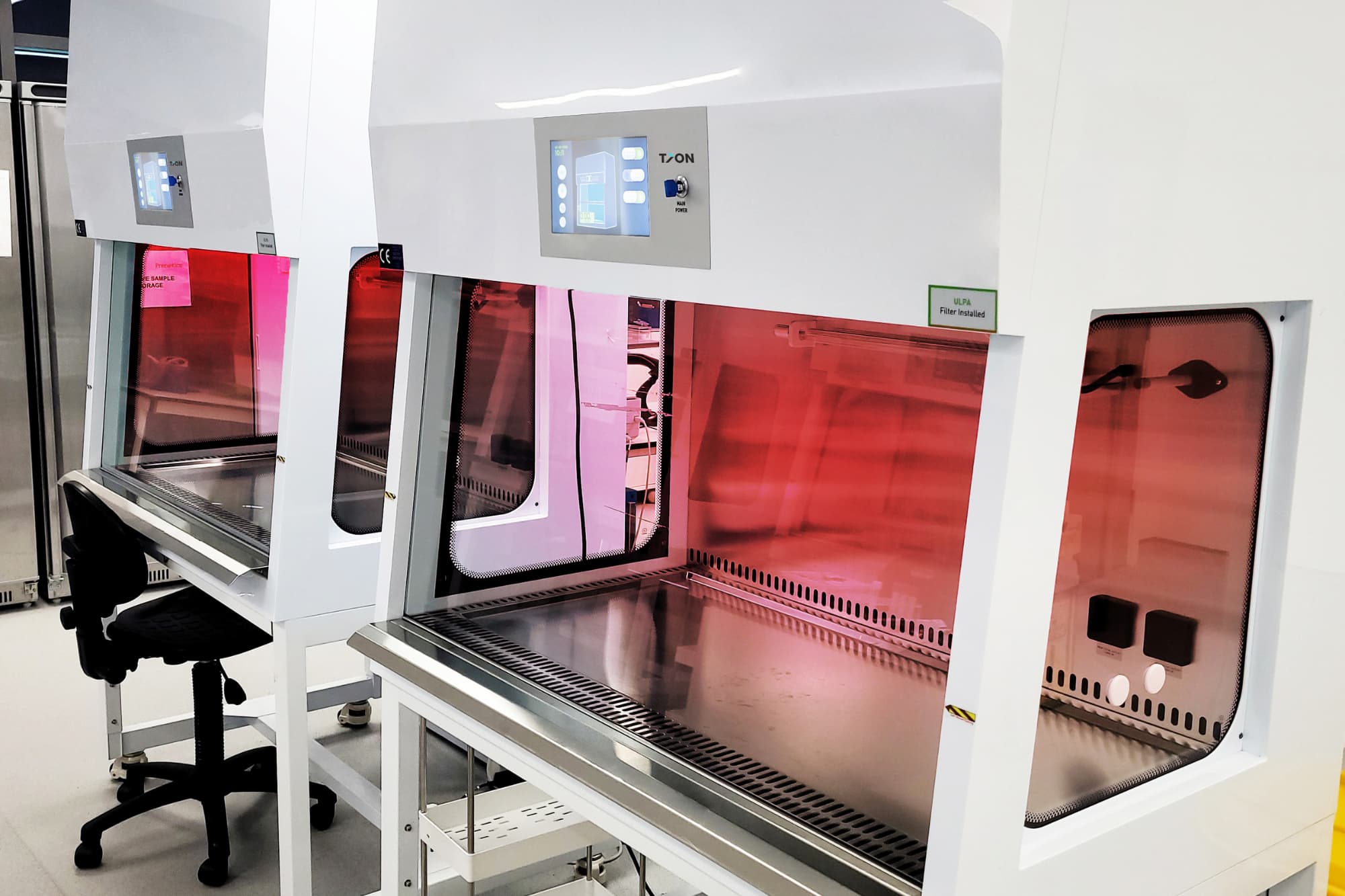
Today, our solution design team will educate you on the use cases, applications and circumstances that warrant the purchase of a Class II biosafety cabinet. But before we begin, let's explore the basics. A Class II biosafety cabinet is a ventilated enclosure designed to protect workspace samples from cross-contamination.
However, unlike its distant cousin, the laminar flow cabinet, a Class II BSC also protects the operator from hazardous biological materials. It's this distinction that separates Class II BSCs from other laminar flow systems, which explains their widespread use in healthcare, pharmaceutical and life sciences laboratories.
Use Case Scenario 1: Working With Biological Hazards
If you work with hazardous microbiological materials such as bacteria, viruses, or infectious agents, a Class II biosafety cabinet is a necessity. They're typically used in combination with a robust PPE programme and provide frontline protection to lab technicians inside your facility. The cabinets support two different filter types. HEPA and ULPA. These filters capture harmful pathogens, spores and aerosols generated during the scientific process, before air is recirculated back into the lab. It provides a reliable level of protection for the operator without compromising laboratory safety.
Use Case Scenario 2: Your Sample Requires an ISO 5 Environment
Some applications require particle-free workspaces or an ISO cleanroom environment to ensure the consistency and reliability of results. Occasionally, even a small dust particle or microbe could compromise the accuracy of your test. Class II cabinets avoid this by creating a protective barrier around your samples using laminar flow air. This makes them particularly valuable when working with cell cultures, sterile preparations, or materials where sample contamination could compromise quality.
Use Case Scenario 3: You Require a Controlled Environment
As German politician Wolfgang Schauble once said, "reliability is the precondition for trust". The same can be said in science. Laboratory work depends on the repeatability and consistency of results. Class II cabinets deliver consistency by producing stable airflow conditions. Your operators can rely on the control system to create a calibrated environment where contamination risks are minimised and test results are predictable.
Use Case Scenario 4: Regulated To Ensure Compliance
Many industries that rely on class II biosafety cabinets are subject to strict regulations and safety protocols. Specifying the correct equipment before an audit is conducted will help your laboratories meet standards such as NSF/ANSI or EN12469. By having compliant equipment in place, lab technicians can focus on their work with confidence, knowing their safety and quality requirements are being met.
Our Expert Opinion: Ultimately, the need for a Class II biosafety cabinet boils down to the type of work you're conducting, the level of risk involved, and the regulatory framework you adhere to. In many cases, these units are standard issue equipment. However, it's essential to select a model that aligns with your processes. Whether you're working with hazardous agents, protecting particle-sensitive materials, or preparing for an audit, a Class II biosafety cabinet is essential. For more information read our article, 5 Step Guide to Buying a Biosafety Cabinet.
Read our Privacy Policy for more information on how we collect and process data.



No thank you
Read our Privacy Policy for more information on how we collect and process data.